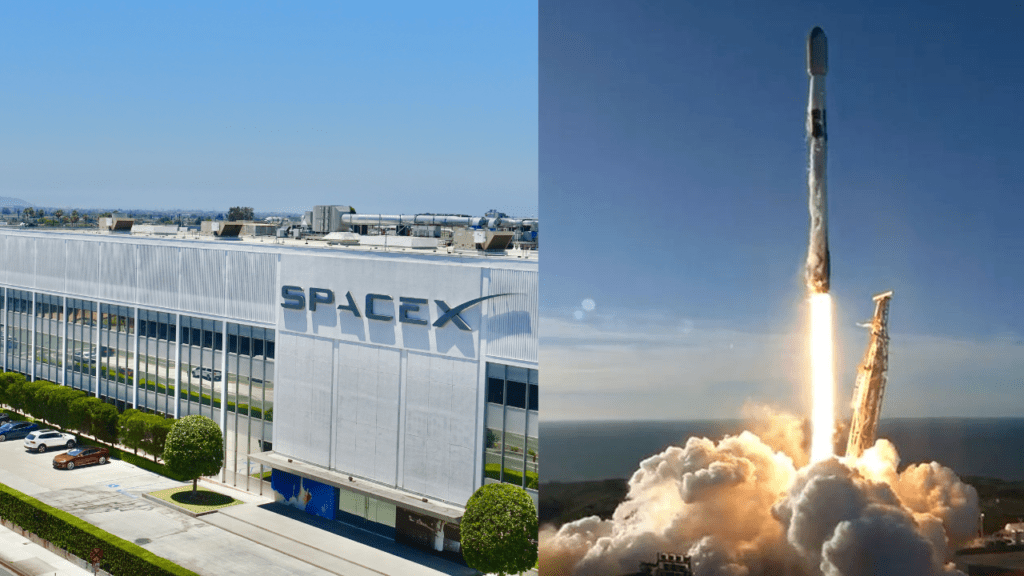Space enthusiasts all over the world held their breath on Thursday, March 14th, 2024, as Elon Musk’s SpaceX successfully launched Starship on its third test flight. This wasn’t just another launch; it was an important turning point in the company’s ambitious deep space plans.

Starship, designed as a totally reusable launch vehicle capable of transporting passengers and cargo on risky trips beyond Earth, has captivated imaginations for years. This last test flight provided a look into the future as the massive stainless-steel spaceship reached new heights, both physically and metaphorically.
The path to success was not straightforward. The first two Starship test flights terminated in spectacular explosions after landing attempts. But this time, things were different. Both the Super Heavy booster, which provided the initial push, and the Starship upper stage performed controlled descent maneuvers, simulating an actual landing situation [CBS News]. While neither stage was designed for recovery, the successful descent efforts represent major progress for SpaceX.
SpaceX: moment of wonder and anticipation
The enthusiasm around the opening was intense. As the massive rocket roared to life, social media was filled with emotions. People all across the world attached themselves to live streaming, mesmerized by the raw power and potential it represented. Here’s a tweet that perfectly describes the moment:
This successful test flight sets the path for further development and more ambitious experiments. SpaceX is anticipated to iterate on the design, with the goal of successfully launching the Starship in the very near future. This will be a critical step in demonstrating the vehicle’s reusability, which might significantly cut the cost of space travel.
SpaceX: Why Starships Matter: A Gateway to Deep Space
So, what does this success mean for the future of space exploration? Here’s an explanation of why Starship is such a significant development:
- Reusable Launch System: Rockets have traditionally been single-use, resulting in tremendous expenses. A totally reusable system such as Starship might significantly cut the cost of space travel, allowing for more frequent trips and exploratory initiatives. Consider a future in which space flight becomes more accessible, not only for government organizations but also for private businesses and people.
- Long Space Exploration: The starship’s massive size and power make it ideal for long space voyages. It has the capability to transport a large number of personnel and goods, paving the way for permanent lunar outposts or possibly manned expeditions to Mars. This might be a watershed moment in human history, allowing us to spread our influence beyond Earth and create a foothold on other celestial worlds.
- Future Inspiration: The Starship program is a shining example of innovation, motivating a new generation of space enthusiasts and engineers. Its success rekindles the idea of interplanetary travel and tests the limits of what is achievable. It demonstrates that with persistence and technical innovation, even the seemingly impossible may become a reality.
Challenges remain, but the future is bright
Of course, obstacles remain. Perfecting the landing procedure, assuring crew safety on long-duration missions, and establishing the essential infrastructure for deep space flight are just a few of the challenges ahead. However, today’s successful launch demonstrates SpaceX’s persistent commitment and brings us one step closer to a future in which humanity’s impact stretches beyond our own planet.
Beyond Launch: Global Impact and Ethical Considerations
The successful Starship launch has received international interest, not just from space enthusiasts but also from government authorities and business space enterprises. The reusability and deep space capabilities of Starship represent a huge advance in space travel, and several governments are keenly monitoring SpaceX’s development [Reuters].
With the possibility of more frequent space flights comes the issue of space debris and the possible contamination of celestial planets. Strict laws and international collaboration will be critical in reducing these hazards as space exploration advances [BBC].
A Sustainable Future for Space Travel.
Starships will be fueled by methane, a cleaner-burning propellant than conventional rocket fuels. While not entirely emission-free, it is a step toward a more sustainable future for space exploration [The Verge]. As we explore farther into space, it is critical to examine the environmental effects and create ethical space travel methods.
Stay tuned for what happens next
SpaceX’s Starship program is quickly growing, and the future promises many intriguing opportunities. Keep a watch out for further information on planned test flights, landings, and crew missions. This is only the beginning of an exciting journey towards a future in which mankind travels beyond Earth and settles on new planets.

